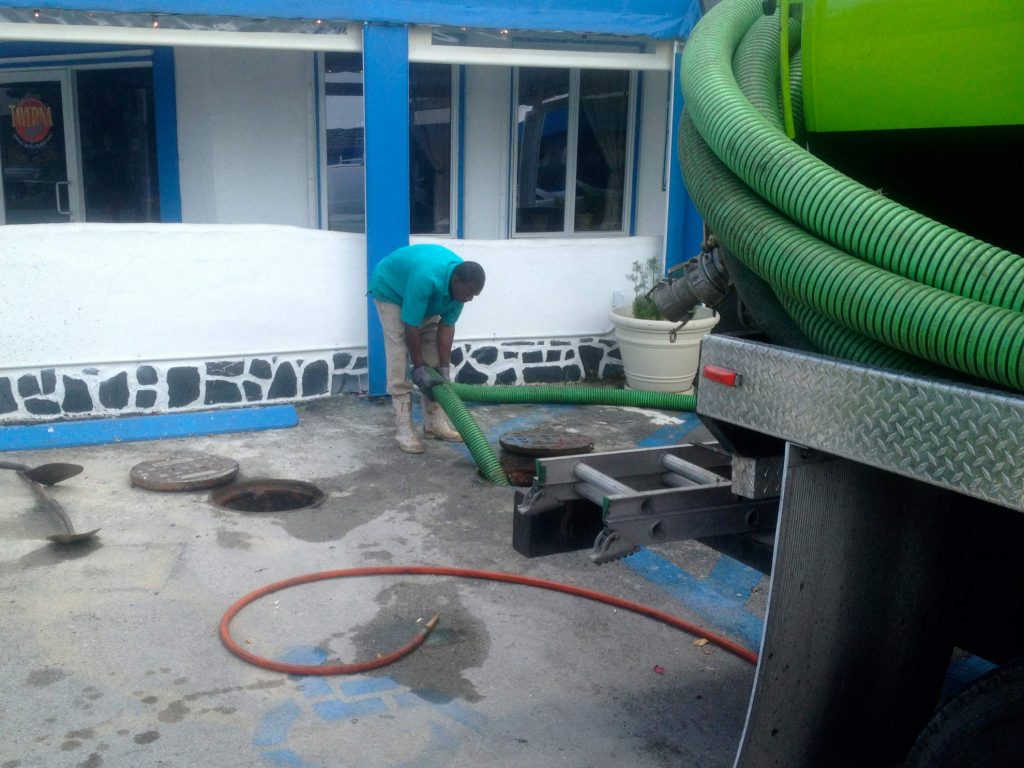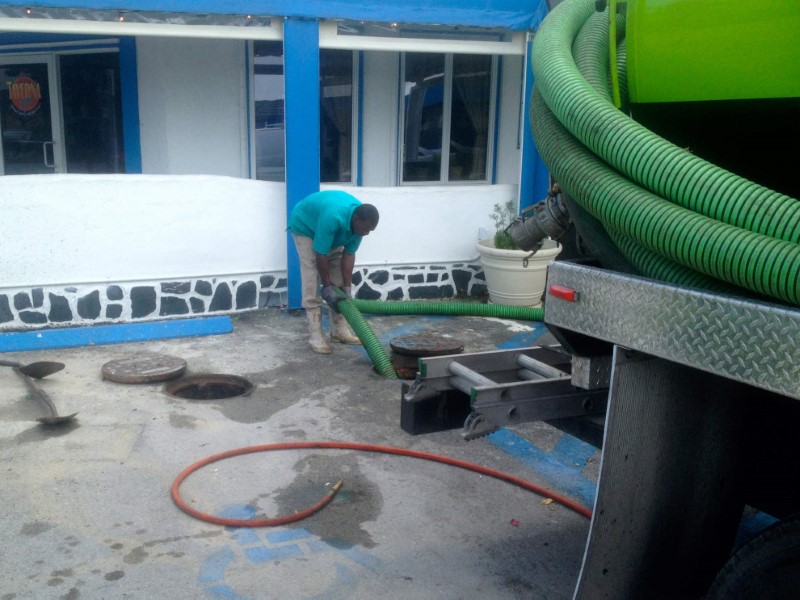
The apartment complex may bring about convenience and practicality but it also has a major setback. Many apartment complexes face lawsuits and pay up hefty fines because they are large contributors to the FOG (fats, oils, grease) crisis. Majority of the FOG that comes out and get collected in the apartment complex grease trap comes from the individual kitchens. Several meals a day are being prepared by all the residents in an apartment complex. FOG is dumped into the kitchen sink from meal preparations to washing dishes. This is mainly because many residents assume that the garbage disposal unit eliminates the FOG that they dump in. The garbage disposal merely grinds up solid waste particles and doesn’t change the composition of the FOG. Ultimately, the grease trap ends up getting too much FOG and solid wastes that it indeed overflows before the scheduled cleaning and pump out.
A grease trap is designed to collect and separate the FOG from the exiting wastewater that has to go directly towards the wastewater treatment facility. When FOG overflows and spills over the wastewater, it gets carried into the sewer lines. There, the FOG cools down, solidifies, and sticks to the pipe walls. Eventually, the FOG blocks the entire pipeline. The wastewater that already has FOG backs up into the apartment complex and even onto the various aquatic systems in the vicinity. Health problems are acquired by the residents because of the pathogens in the untreated wastewater. the environment suffers from pollution and eutrophication because of the various chemicals and FOG in the wastewater. There is certainly a need for apartment complex building grease trap control.
To make the apartment complex building grease trap control possible, residents should also be vigilant in their manner of using the kitchen. In preparing meals and washing dishes, they should modify the practice that they have been used t for so long. The grease materials that they collect from cooking meals and after eating should be collected in a container, sealed up, and thrown out with the regular trash. Fine filters could also be installed in the sinks to make sure that there are no solid wastes and FOG that gets into the grease trap. The residents may also find washing their utensils and dishes much easier and faster when they do this improved practice.
Using bioremediation is the best means of apartment complex building grease trap control. This process makes use of non-pathogenic or friendly bacteria that immediately degrades the FOG and the solid particles in the grease trap. If the grease trap is always treated with bacteria, then the FOG will be controlled more efficiently. Majority of the states recommend and use bacteria in controlling the FOG crisis. During the process, offensive smells are also eliminated. These helpful microorganisms help the apartment complex management avoid lawsuits and large fines. The FOG doesn’t even reach the limit overflow set by the state when treated with bacteria.
It takes extra effort in maintaining apartment complex building grease trap control. But in the end, everyone reaps the benefits. Bacteria are allies in the fight against FOG overflow. They are Nature’s most efficient plumbing tool. With their help, the environment and the health of everyone in the premises are kept safe.
